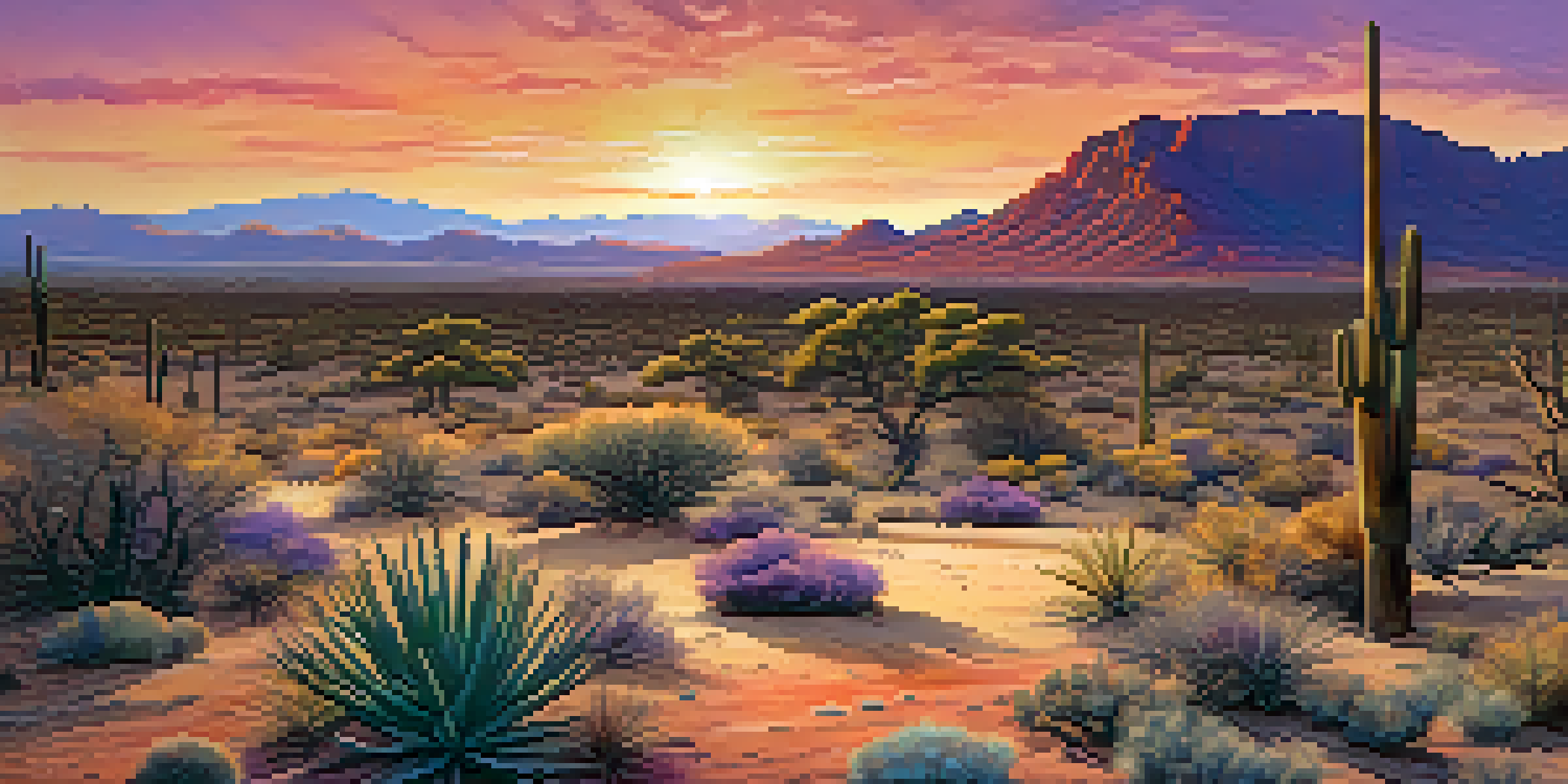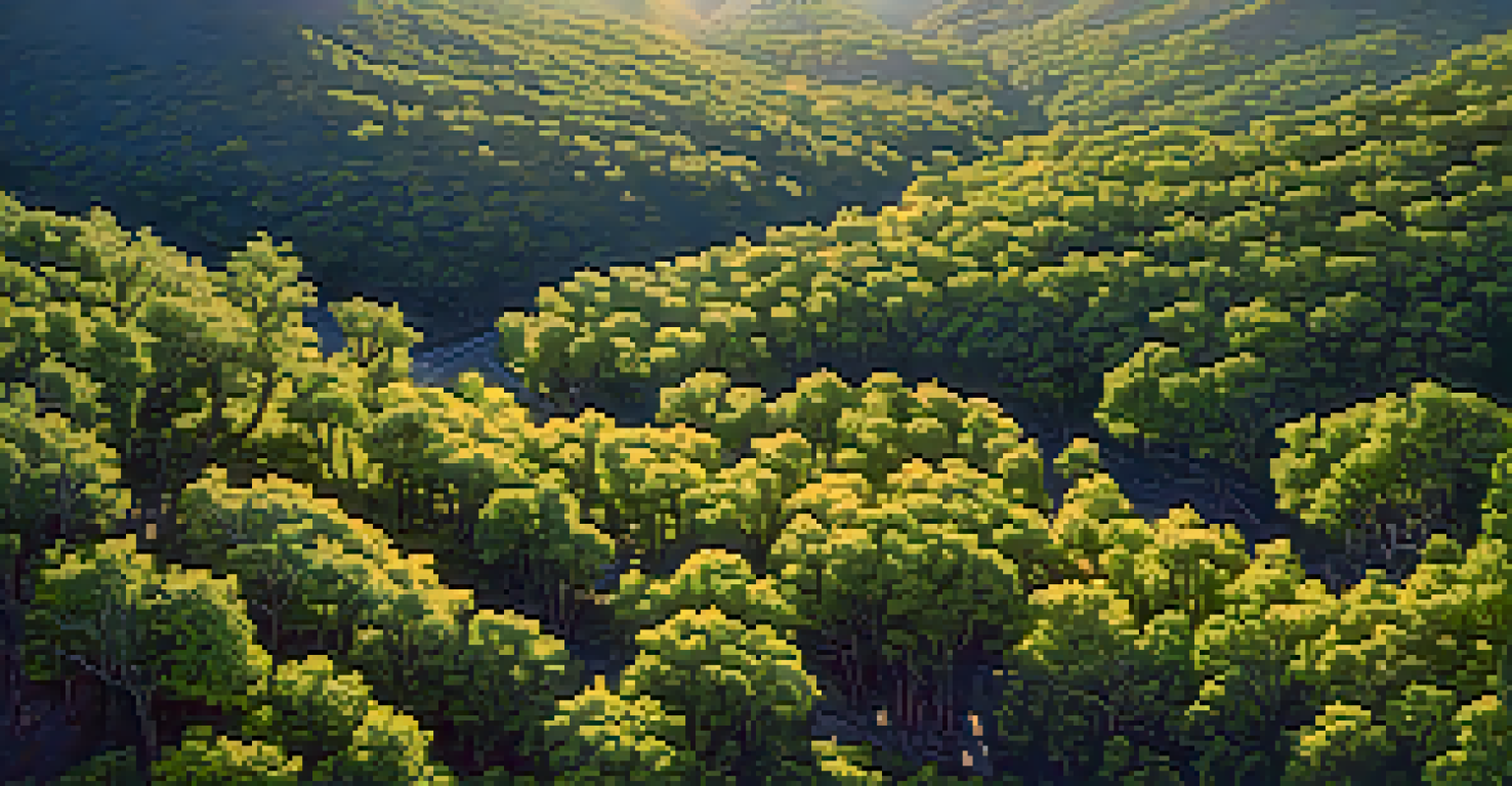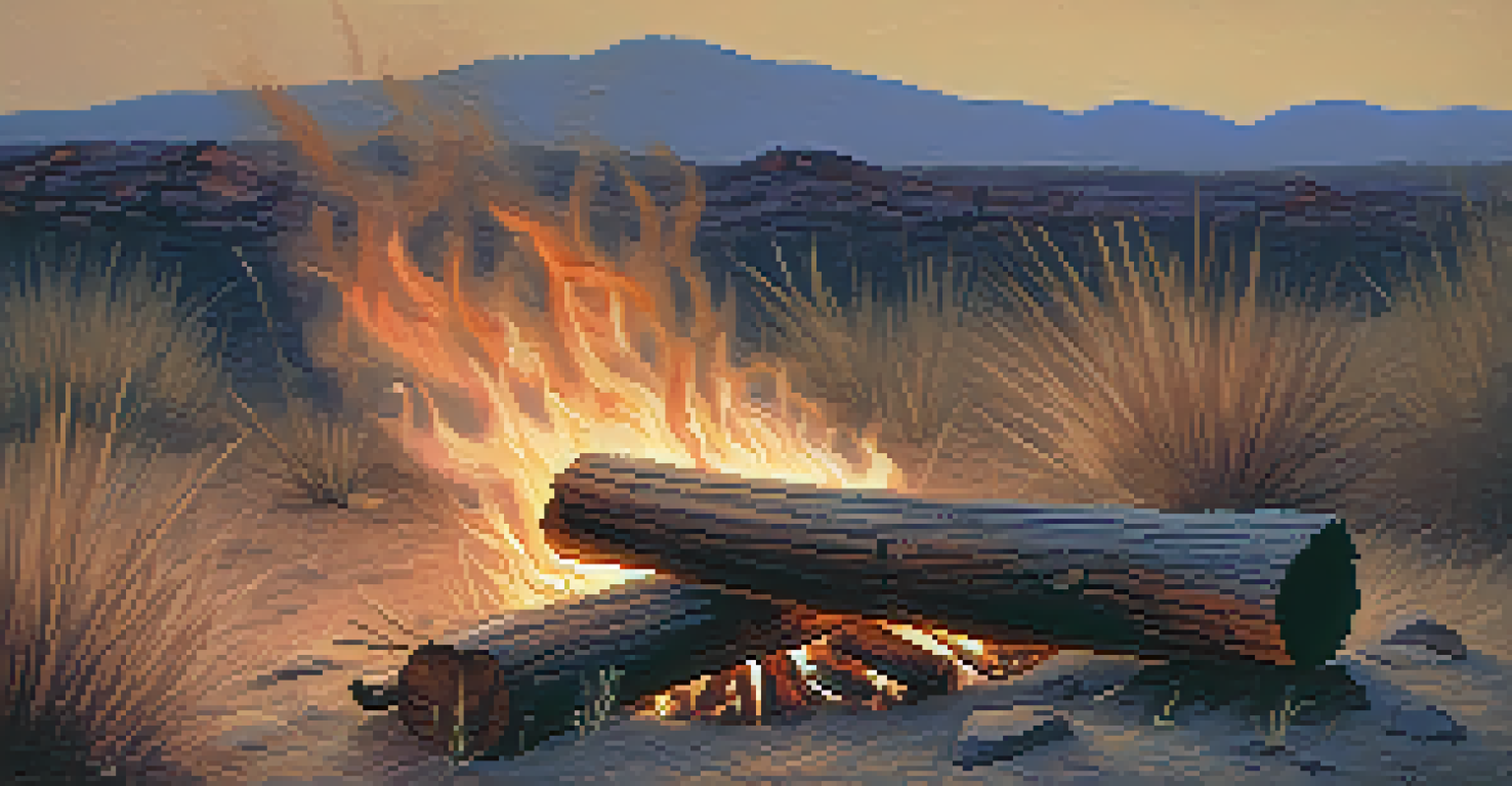Wildfires in Arizona: Causes, Consequences, and Prevention

The Unique Environment of Arizona Contributing to Wildfires
Arizona's diverse landscapes, from deserts to forests, create a unique environment that can fuel wildfires. The state experiences hot, dry summers and mild winters, which can lead to extremely dry vegetation. When combined with strong winds, this dry foliage becomes highly flammable, setting the stage for wildfires.
Wildfires are a natural part of many ecosystems, but they are increasingly becoming a threat to human life and property due to climate change and human activity.
Additionally, Arizona's monsoon season can introduce sudden bursts of rain, which can encourage the growth of grasses and shrubs. While this can be beneficial, it also means that when the dry season returns, there’s an abundance of fuel ready to ignite. This cycle of wet and dry conditions plays a significant role in the wildfire frequency and intensity in the region.
Finally, human activities, such as camping and hiking, further contribute to the fire risks. Even a small spark from a campfire or a discarded cigarette can escalate quickly, leading to devastating consequences. Understanding this unique environment is essential to grasping why wildfires are such a persistent issue in Arizona.
Natural Causes of Wildfires in Arizona
While human activities are often blamed for wildfires, natural causes also play a significant role. Lightning strikes are one of the primary natural triggers, especially during the monsoon season when thunderstorms are prevalent. These strikes can ignite dry vegetation, leading to wildfires that can spread rapidly depending on weather conditions.

Another natural cause is the presence of invasive species that can change the fire dynamics in an area. For example, the introduction of non-native grasses can create a more fire-prone environment, as these species often dry out more quickly than native vegetation. This shift in plant life can result in more frequent and intense wildfires.
Arizona's Environment Fuels Wildfires
The state's diverse landscapes and climate conditions create an environment that is prone to wildfires.
Moreover, climate change is increasingly influencing wildfire patterns. Rising temperatures and prolonged droughts are making conditions more favorable for wildfires to occur. As the climate continues to shift, understanding these natural causes is crucial for developing effective wildfire management strategies.
Human Activities That Ignite Wildfires
Human activities are a significant factor in the ignition of wildfires in Arizona. Campfires left unattended, fireworks, and discarded cigarettes can all spark a blaze that quickly spreads. For instance, a single spark from a campfire can ignite the dry brush surrounding it, leading to devastating wildfires that threaten lives and property.
The best way to prevent wildfires is through education and community involvement; when people understand the risks, they can take proactive steps to protect their environments.
In addition, agricultural practices can contribute to wildfire risks. Farmers may burn fields to clear debris or promote new growth, but these controlled burns can quickly escalate if not properly managed. When winds pick up, even a small, controlled fire can turn into a raging wildfire, impacting nearby communities and ecosystems.
Urban development also plays a role in wildfire risks. As more homes are built near wildland areas, the potential for wildfires increases. This phenomenon, known as the wildland-urban interface, creates a dangerous scenario where fire can easily spread from natural areas to populated regions.
Consequences of Wildfires in Arizona
The consequences of wildfires can be devastating, impacting both the environment and communities. One major effect is the loss of wildlife habitat. As fires sweep through forests and grasslands, countless animals are displaced, and some may not survive the intense heat and flames.
Moreover, wildfires can lead to significant air quality issues. Smoke from wildfires contains harmful pollutants that can affect respiratory health for people living nearby. During large fires, air quality can drop drastically, prompting health advisories and creating hazardous conditions for vulnerable populations.
Climate Change Increases Fire Risks
Rising temperatures and shifting precipitation patterns are making wildfires more frequent and intense in Arizona.
Additionally, the economic impact of wildfires is substantial. The costs associated with firefighting efforts, property damage, and recovery can strain local and state budgets. Communities may also face long-term economic losses due to decreased tourism and reduced property values in fire-prone areas.
The Role of Climate Change in Wildfire Frequency
Climate change is reshaping the landscape of wildfires in Arizona, making them more frequent and intense. Rising temperatures and prolonged droughts create conditions that are ideal for wildfires to ignite and spread. As the climate continues to warm, the risks associated with wildfires are expected to increase.
In addition, shifting precipitation patterns are contributing to the problem. While some areas may experience heavy rainfall, others remain dry, leading to an imbalance in vegetation growth. This variability can create a situation where some regions are lush and overgrown, while others are parched, both conditions promoting wildfires.
Furthermore, climate change impacts the timing of fire seasons. Traditionally, Arizona has a specific wildfire season, but with climate change, this season is starting earlier and lasting longer. Understanding this link between climate change and wildfires is essential for developing proactive strategies to manage and prevent future fires.
Effective Prevention Strategies Against Wildfires
Preventing wildfires requires a multifaceted approach that involves community awareness and education. Simple steps, like ensuring campfires are completely extinguished and avoiding outdoor burning on windy days, can significantly reduce the risk of igniting a wildfire. Community outreach programs can help educate residents about these preventative measures.
Moreover, implementing controlled burns can be an effective way to manage wildfire risks. By intentionally setting fires under controlled conditions, land managers can reduce excess vegetation that fuels wildfires. These prescribed burns are carefully planned and monitored, aiming to minimize risks while promoting healthy ecosystems.
Community Engagement is Key
Active community involvement in fire prevention efforts can significantly reduce the risk of wildfires.
Finally, creating defensible space around homes and properties is crucial. This practice involves clearing flammable materials and maintaining a buffer zone to protect structures from encroaching wildfires. Homeowners can take proactive steps, such as landscaping with fire-resistant plants, to reduce their risk and contribute to community safety.
The Importance of Community Involvement in Fire Prevention
Community involvement is essential in wildfire prevention efforts. When residents come together to create awareness and share information, they can significantly reduce wildfire risks. For example, neighborhood watch groups focused on fire safety can help keep an eye out for potential fire hazards and educate each other about best practices.
Additionally, local governments and organizations can foster community involvement by offering workshops and resources. These initiatives can teach residents about fire prevention techniques, such as creating defensible space or understanding fire weather conditions. Engaging the community in these discussions can lead to a more informed and proactive population.

Ultimately, when communities unite to prioritize fire safety, the chances of preventing wildfires increase significantly. A collective effort not only enhances safety but also strengthens community bonds, creating a shared commitment to protecting both lives and the environment from the threat of wildfires.